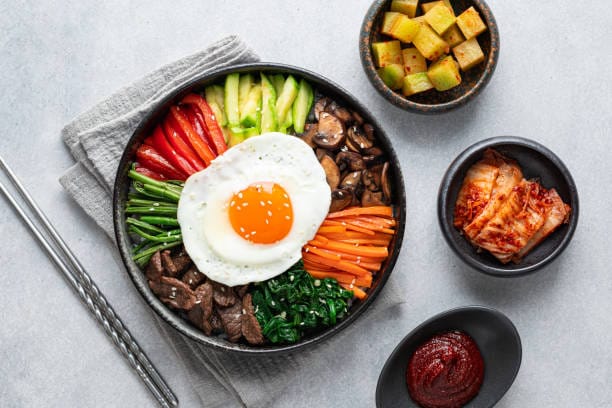Bibimbap Recipe: A Flavorful Journey into Korean Cuisine

When it comes to vibrant, colorful, and healthy dishes, few can compete with the beloved Korean delicacy known as bibimbap. Not only is it a feast for the eyes, but it also holds a rich cultural and historical significance that makes it a staple in Korean households and a favorite among food lovers worldwide. In this post, we will explore what bibimbap is, delve into its history, and provide you with a delicious bibimbap recipe that you can try at home!
What is Bibimbap?
Bibimbap, which translates to "mixed rice," is a quintessential Korean dish that consists of a bowl of warm rice topped with an array of sautéed and seasoned vegetables, meat (typically beef), a fried egg, and a generous dollop of gochujang (Korean chili paste). The beauty of bibimbap lies in its versatility; you can customize it to include your favorite ingredients or whatever you have on hand, making it a perfect dish for any occasion.
The Nutritional Benefits
Before we dive into the recipe, let’s talk about the nutrition aspect of bibimbap. This dish is not just a delight for your taste buds; it’s also packed with nutrients. The variety of vegetables contributes vitamins, minerals, and fiber, while the rice offers carbohydrates for energy. If you add protein-rich ingredients like beef, chicken, or tofu, you make it a well-rounded meal that provides sustenance and satisfaction. If you're curious about the specific nutritional profile of bibimbap, check out this detailed nutrition page that highlights everything you need to know.
A Cultural Snapshot: The Significance of Bibimbap
Bibimbap dates back to the 19th century and is traditionally consumed during the Korean celebration known as "Dotorimuk," or the festival of the harvest. Originally, it was a way for farmers to use leftover vegetables with their steamed rice, ensuring that nothing went to waste. Over time, bibimbap evolved into what we know today, with different regions in Korea putting their unique twists on the dish. For instance, Jeonju bibimbap is famous for its use of high-quality ingredients and the addition of a special soy sauce, taking the dish to new culinary heights.
Eating bibimbap goes beyond just enjoying a meal—it’s an experience. The act of mixing the ingredients together before eating symbolizes harmony and balance, values deeply rooted in Korean culture.
Try This Delicious Bibimbap Recipe!
Ingredients:
- For the Bibimbap:
- 2 cups cooked short-grain rice (white or brown)
- 1 cup spinach, blanched and squeezed
- 1 medium carrot, julienned
- 1 zucchini, julienned
- 1 cup shiitake mushrooms, sliced
- 1 cup bean sprouts, blanched
- 1 pound beef (or tofu for a vegetarian option), thinly sliced
- 2 eggs
- 2 tablespoons soy sauce
- 2 tablespoons gochujang (more or less to taste)
- 1 tablespoon sesame oil
- 1 tablespoon vegetable oil
- Sesame seeds and sliced green onions for garnish
Instructions:
- Prepare the Protein: Marinate the beef or tofu in soy sauce and sesame oil. If using beef, sauté it in a pan over medium-high heat until cooked through. For tofu, sauté until golden brown.
- Cook the Vegetables: In the same pan, add a bit of vegetable oil and sauté the mushrooms until soft. Set aside. Next, add the carrot and zucchini, cooking until just softened. Finally, add the spinach and bean sprouts, sautéing them briefly. Season vegetables with salt to taste.
- Fry the Eggs: In another pan, fry the eggs sunny-side up or to your liking. The runny yolk adds creaminess to the dish.
- Assemble the Bibimbap: In a large bowl, place the cooked rice at the bottom. Arrange the sautéed vegetables, the marinated beef or tofu, and the fried egg on top. Add a generous dollop of gochujang and sprinkle with sesame seeds and green onions.
- Mix and Enjoy: Just before eating, mix everything together to coat it in the gochujang and enjoy the explosion of flavors!
Whether you’re trying to eat healthier, looking for a quick meal, or wanting to experience the vibrant flavors of Korean cuisine, this bibimbap recipe is a fantastic option. It not only nourishes the body but also brings a piece of Korean culture right to your kitchen. Enjoy making this colorful, nutritious dish and don’t forget to make it your own by experimenting with different vegetables, proteins, and sauces!
Happy cooking and enjoy your bibimbap!